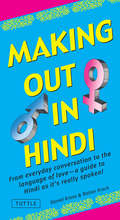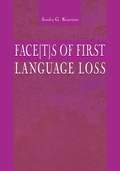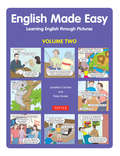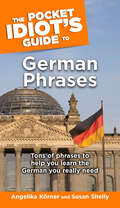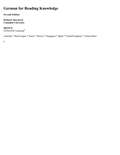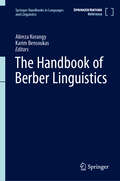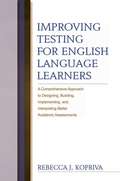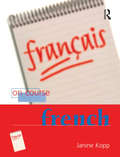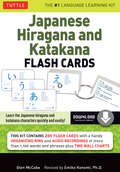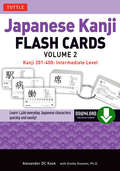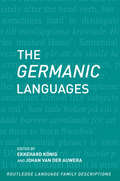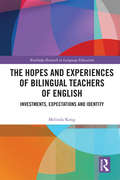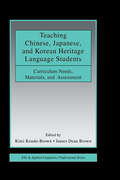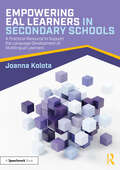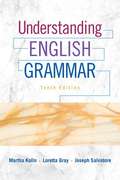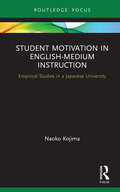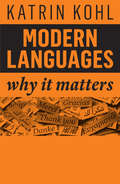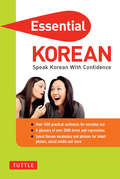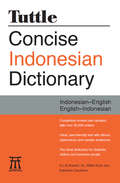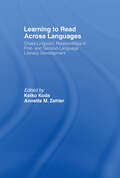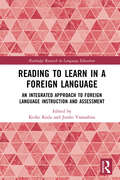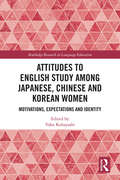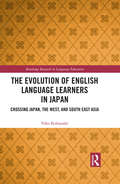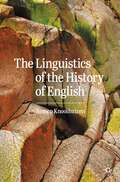- Table View
- List View
Making Out in Hindi: (Hindi Phrasebook
by Rainer Krack Daniel KrasaMaking Out in Hindi is a fun, accessible and thorough Hindi phrase book and guide to the Hindi language as it's really spoken.If you are a student, businessman or tourist traveling to India and would like to have an authentic and meaningful experience, the key is being able to speak like a local. <P><P>This friendly and easy-to-use Hindi phrasebook makes this possible. Making Out in Hindi has been carefully designed to act as a guide to modern colloquial Hindi for use in everyday informal interactions-giving access to the sort of catchy Hindi expressions that aren't covered in traditional language materials. As well as the Romanized form of Hindi, each expression is given in authentic Hindi script (Devanagari), so that in the case of difficulties the book can be shown to the person the user is trying to communicate with.This Hindi phrasebook includes:A guide to pronouncing Hindi words correctly, including vowels, consonants and nasalizationExplanations of basic Hindi grammar, such as, male vs. female, formal vs. informal, loan words and synonymsComplete Hindi translations including DevanagariUseful and interesting notes on the Hindi language and Indian cultureLots of colorful, fun and useful expressions not covered in other phrasebooks
The Art of Chicago Improv: Short Cuts to Long-Form Improvisation
by Rob KozlowskiIn this book the author traces the history and growth of acting in Chicago.
Face[t]s of First Language Loss
by Sandra G. KouritzinThis book contributes to the understanding of first-language loss in both immigrant and indigenous communities in (at least) three ways. First, it provides insight into the process of language loss and the factors contributing to it. Second, it attempts to define, from an insider perspective, what it means to "lose" a language. Third, it analyzes the perceived consequences of first language loss in terms of social, academic, emotional, and economic factors--an approach previously lacking in research on language loss. Most studies of first language loss are impersonal, even when they tell emotional stories. This polyphonic book about language loss and imperfect learning of heritage languages tells the inside story. Easy to read and yet academic, it gives voice to five different storytellers who relate the histories of their first language loss and analyzes themes from 21 life-history case studies of adults who had lost their first languages while learning English. The stories in this book make a compelling argument that heritage languages should be preserved, that ESL should be about developing bilinguals not English monolinguals. Important reading for researchers, practitioners, and graduate students in ESL and bilingual education, multicultural education, cultural studies, and sociology, this book will also interest qualitative researchers as an example of a unique form of both doing and writing research.
English Made Easy Volume 2
by Pieter Koster Jonathan CrichtonThis is a fun and user-friendly way to learn EnglishEnglish Made Easy is a breakthrough in English language learning-imaginatively exploiting how pictures and text can work together to create understanding and help learners learn more productively. It gives learners easy access to the vocabulary, grammar and functions of English as it is actually used in a comprehensive range of social situations. Self-guided students and classroom learners alike will be delighted by the way they are helped to progress easily from one unit to the next, using a combination of pictures and text to discover for themselves how English works. The pictorial method used in this book is based on a thorough understanding of language structure and how language is successfully learned.English Made Easy, Volume 2 consists of a total of 20 units arranged in groups of five. The first four units presents language and provide learners the opportunities to practice as they learn. The first page of each unit has a list of all the words and phrases to be learned in that unit, together with pronunciation guide. At the end of each unit, an interesting story which uses the language that has just been learned is presented
The Pocket Idiot's Guide to German Phrases: Tons of Phrases to Help You Learn the German You Really Need
by Angelika Korner Susan ShellySprechen Sie Deutsch? You do now! The Pocket Idiot&’s Guide® to German Phrases is a handy, informative, and fun guide to all the phrases readers need to enjoy a visit to Germany, complete with the basics of German grammar and syntax and a compact German-English/English-German dictionary. • Nearly 1.7 million Americans travel to Germany each year for business and/or leisure—and most will find this book invaluable. • Full of current and classic phrases from every aspect of life and travel, along with useful travel tips and maps. • Easy-to-use pronunciation guide and verb, noun, and idiom charts. • Convenient, pocket-size format for on-the-go travelers.
German for Reading Knowledge
by Richard KorbLearn to apply basic German grammar and vocabulary to reading and translating progressively complex texts with the seventh edition of JANNACH'S GERMAN FOR READING KNOWLEDGE. Recognized as the leader in teaching reading skills, this text provides the tools you need to read specialized literature in your field. The Book Companion Website contains the readings that appear in each chapter, plus new comprehension questions and activities about the readings that are designed to let you practice specific reading skills.
The Handbook of Berber Linguistics (Springer Handbooks in Languages and Linguistics)
by Alireza Korangy Karim BensoukasThis handbook is the largest and most comprehensive publication on Berber linguistics to date, covering the variety of Berber dialects and related linguistics trends. Extensive and diverse at thematic and theoretical levels, with the aim of deepening students and scholars' understanding of the workings of Berber as a linguistic phenomenon, it explores a multitude of angles through which the diachronic and synchronic intricacies of Berber varieties can be examined. It enables a better understanding of the issues in the various components of North African languages, as well as their theoretical and typological significance and implications. The work covers phonology and phonetics, morphology and syntax, semantics and pragmatics, socio-linguistics and dialectology, language teaching and psycholinguistics, lexicology, language contact and comparative linguistics, historical linguistics and etymology. Sub-themes explored include prosody, ideophones (and expressive language in general), morpho-syntactic categories, sociolinguistic variation and several other seminal interdisciplinary explorations. The chapters reflect the diversity of Berber varieties and include up-to-date scholarship by leading Berberists, with varieties including Figuig, Kabyle, Senhaja, Siwa, Standard Moroccan Amazigh, Tamazight, Tarifit, Tashlhit, Touareg, Tunisian Berber, Znaga, as well as Proto-Berber. A large geographical territory is covered, including Algeria, Egypt, Libya, Mali, Mauritania, Morocco, and Tunisia. With contributions from these Berber-speaking countries and their diaspora, there are also chapters from prominent Berber scholars from America, Australia and Europe. To this end, the volume includes perspectives and theories from different schools of linguistics. In including original French contributions and English translations of research from top scholars in the field, the book includes another vital dimension in terms ofthe resources, and sources. As a comprehensive reference, this work is of interest to North Africanists from various disciplines, including anthropologists, linguists, and sociologists, but particularly linguists interested in endangered languages, and those working on the historical and comparative study of the Afroasiatic language phylum.
Improving Testing For English Language Learners
by Rebecca KoprivaMore than any book to date, this one provides a comprehensive approach to designing, building, implementing and interpreting test results that validly measure the academic achievement of English language learners. It scaffolds the entire process of test development and implementation and discusses essential intervention points. The book provides the type of evidence-based guidance called for in federal mandates such as the NCLB legislation. Key features of this important new book include the following… Comprehensive – This book recommends methods for properly including ELLs throughout the entire test development process, addressing all essential steps from planning, item writing and reviews to analyses and reporting. Breadth and Depth of Coverage– Coverage includes discussion of the key issues, explanations and detailed instructions at each intervention point. Research Focus – All chapters include an extensive review of current research. Emerging Trends – The chapters summarize guidance appropriate for innovative computer-based assessments of the future as well as the paper-and-pencil tests of today. This book is appropriate for anyone concerned with the development and implementation of fair and accurate testing programs for English language learners. This includes university based researchers, testing personel at the federal, state and local levels, teachers interested in better assessing their diverse student populations and those involved in the testing industry. It is also appropriate for instructors teaching undergraduate and graduate courses devoted to testing the full range of students in todays schools.
On Course
by Janine KoppStarting again – or maybe starting anew? Want to widen your prospects and sort out your language skills? Looking for a serious French course designed specifically for your needs? On Course provides a thorough grounding in the language and enables you to speak, read, write and understand contemporary French. Covering all you need to know, On Course will: Teach you the sort of French which will enable you to live and study in French-speaking countries Appeal to your interests, concerns and needs Focus your learning on language use, helping you cope in all situations Consolidate your learning and make the language stick Guide your pronunciation so you get it right first time Make you culturally aware Motivate you though to the end of the course Teach you the transferable skills all employers require
Japanese Hiragana and Katakana Flash Cards Kit
by Emiko Konomi Glen MccabeLearning to recognize and pronounce the basic hiragana and katakana phonetic alphabets is the first step in studying the Japanese language.<P><P>This set of 200 flash cards along with accompanying booklet, wall charts, and audio disc contains everything you need to quickly gain mastery of the two Japanese syllabaries and is a great way to learn Japanese. Frequent review is the key to memorizing the characters, and these cards are easily carried in a pocket or purse for a quick review session anytime.This box contains: 200 hole-punched flash cards with an organizing ring. Two 24" x 18" wall charts showing all hiragana and katakana. Native-speaker audio recordings of 1,128 words and phrases. 32-page study booklet with indexes and practice tips.Also available from Tuttle Publishing, Japanese Kanji Flash Cards Kit can be used alongside these flash cards to master written Japanese.
Japanese Kanji Flash Cards Volume 2: Intermediate Level (Downloadable Material Included)
by Emiko Konomi Alexander KaskEverything you need to learn 200 everyday Japanese kanji characters is here in this ebook!Flash cards are an essential tool in memorizing words when you are learning a new language. In Japanese Kanji Flash Cards Kit, Volume 2, you'll get all the tools needed to learn 200 everyday Japanese kanji, following on from the 200 kanji introduced in Volume 1 of this series.This Japanese language ebook includes: 200 flash cards featuring commonly used characters. Downloadable audio recordings of over 1,200 words and phrases from a native speaker. A 32-page study booklet with sorting indexes and practice tips. Each expertly designed flash card in this ebook offers core information about the meanings, pronunciations, vocabulary, and usage for each character along with memorable phrases and drawings to help you learn the kanji. A stroke-order diagram shows how to write the kanji correctly. You can also sort the cards into smaller sets so you can learn or review them in batches and help to remember the kanji character effectively.
The Germanic Languages (Routledge Language Family Series)
by Ekkehard Konig Johan van der AuweraProvides a unique, up-to-date survey of twelve Germanic languages from English and German to Faroese and Yiddish.
The Hopes and Experiences of Bilingual Teachers of English: Investments, Expectations and Identity (Routledge Research in Language Education)
by Melinda KongIn this age of internationalisation of higher education, many bilingual teachers from non-English-speaking contexts pursue their postgraduate degrees in English-speaking countries. Most programmes focus on providing content knowledge to them, while neglecting their investments. Furthermore, not much attention is given to what these bilingual teachers expect to gain from studying abroad, as well as their lived experiences and identity construction both inside and outside the classroom in English-speaking countries and when they return home. Nevertheless, these dimensions are crucial to their growth as teachers and users of English. This book explores these neglected aspects through case studies of bilinguals from various backgrounds. Through these case studies, the book examines the hopes, struggles and adaptation of bilinguals. It provides insights into what international students should realistically expect when studying overseas, and how to empower bilingual teachers, users and learners of English.
Teaching Chinese, Japanese, and Korean Heritage Language Students: Curriculum Needs, Materials, and Assessment (ESL & Applied Linguistics Professional Series)
by Kimmi Kondo-Brown James Dean BrownThis book contributes to building the research knowledge that language teaching professionals need in developing curriculum for the large population of East Asian heritage students (including Chinese, Japanese, and Korean) in countries like the United States, Canada, and Australia, where speakers of East Asian languages are among the fastest growing populations. Heritage learners are defined as those who initially acquired certain levels of linguistic and cultural competence in a non-dominant language mainly through interaction with foreign-born parents and other family members at home. Heritage language instruction is currently a “hot topic” and is becoming a sub-discipline within the fields of foreign language education and applied linguistics. Special instruction for heritage language learners is on the rise, particularly in the U.S. and Canada. Providing theoretical and practical information about heritage-language instruction in terms of curriculum design, learner needs, materials development, and assessment procedures, the goal of this book is not only to promote research about heritage students in East Asian languages but also to improve the teaching of these students in various educational settings and all over the world, especially in English speaking countries. The volume is organized in four sections:*Overview—addressing the timeliness, necessity, and applications of the work and issues and future agendas for teaching Chinese, Japanese, and Korean heritage students;*Language Needs Analysis;*Attitude, Motivation, Identity, and Instructional Preference; and*Curriculum Design, Materials Development, and Assessment Procedures Teaching Chinese, Japanese, and Korean Heritage Language Students is intended as a primary text or reference for researchers, educators, and students in the areas of curriculum, pedagogy, and assessment studies related to teaching bilingual and heritage students in general and East Asian heritage students in particular.
Empowering EAL Learners in Secondary Schools: A Practical Resource to Support the Language Development of Multilingual Learners
by Joanna KolotaOne in five students are identified as speaking English as an Additional Language (EAL) and all teachers are highly likely to be teaching multilingual students in their classrooms. As our schools become more culturally and linguistically diverse, they must respond to the needs of the students in front of them, and this book provides a range of strategies and resources to ensure teaching is adaptive and responsive so that all learners thrive and fulfil their academic potential.At the heart of the book is developing an understanding of how languages are acquired and an awareness that all students, regardless of their current English language proficiency, need to be offered a challenging and supportive environment. Chapters offer: High-yielding, practical approaches and strategies to ensure that students are able to access content-appropriate lessons and simultaneously develop their language A plethora of resources and step-by-step examples, showcasing how explicit vocabulary and grammar learning can be context-based for the benefit of all learners Each teacher is positioned as a language teacher, with the responsibility of planning sessions where language is not perceived as an add-on, but as an integral and pivotal part. This book will empower you as an educator and ensure that your classroom is a language-aware and stimulating environment for your students. It will be essential reading for all secondary school educators and teaching assistants who support EAL students in mainstream lessons and are responsible for producing resources and implementing classroom strategies.
Understanding English Grammar: Tenth Edition
by Martha J. Kolln Robert W. Funk Loretta Gray Joseph SalvatoreThe essentials of English grammar, with a distinctively clear organization and user-friendly language. The acclaimed Understanding English Grammar fosters students’ innate language expertise as they study sentence grammar. It offers a practical blend of the most useful elements of both traditional and new linguistic grammar, beginning with an overview of English as a world language, language change, and various classroom issues associated with prescriptive grammar and correctness, along with an updated list of further readings. Every discussion is viewed through the eyes of a novice reader, bearing in mind how the current generation of students uses communication tools for social purposes. Both students and teachers appreciate the self-teaching quality that incremental exercises provide throughout the chapters, with answers at the end of the book. The Tenth Edition introduces new coauthors Loretta Gray and Joseph Salvatore—two respected scholars who bring their special expertise in linguistics and creative writing, as well as long experience in teaching grammar and writing.
Student Motivation in English-Medium Instruction: Empirical Studies in a Japanese University (Routledge Focus on English-Medium Instruction in Higher Education)
by Naoko KojimaThis book explores Japanese students’ learning experiences and challenges in English medium instruction (EMI) from motivational perspectives. Using self-determination theory (SDT) as the framework, the first part reveals a lack of the three psychological needs of SDT (autonomy, competence, relatedness) that cause loss of students’ initial interest in learning English language and content. The author outlines pedagogical interventions that can be implemented in order to make the learning environment better. The second half of the book shows the effects these interventions had on the fulfillment of the three psychological needs, especially perceived relatedness and autonomy. In conclusion, the author focuses on the importance of listening to Japanese students’ voices and building a community that can motivate students, thus maximizing the pedagogical effectiveness of EMI. This volume will be useful to anyone involved in motivation, language learning or EMI research, pedagogy or practice.
Modern Languages: Why It Matters (Why It Matters)
by Katrin KohlIt might seem as if globalization is making the whole world speak English. But spend time in any major city and you are likely to encounter a cornucopia of languages. Even monolingual people have different ways of speaking to their bosses or teachers, their intimate friends or their pets. And if you live in India or Nigeria, you might use five different languages during a typical day. Katrin Kohl makes a passionate case for why we must embrace languages in all their diversity. When you study a language, you open a unique doorway into the world, immerse yourself in a different way of seeing, and discover new ways of communicating with people from different cultures on their terms. Kohl argues that language diversity is of vital importance to human societies, sustaining the complexity of human nature, culture and technology. We should care about preserving it as much as we care about preserving the diversity of our biological world.
Essential Korean
by Soyeung Koh Gene BaikA concise Korean phrase book and guide to the Korean Language, Essential Korean contains basic vocabulary necessary for communicating in Korean.Have you ever considered learning Korean, but been put off by the unusual look of the characters? Don't let yourself be scared away! Korean has been called "the most logical language there is," and with this concise and thoughtful phrasebook you will soon see why.Perfect for business people or tourist traveling to Korea or for students who want to supplement their learning (and get an A in Korean!), this book's easy indexing feature allows it to act as a Korean phrasebook or as a Korean to English Dictionary / English to Korean Dictionary. A clever "point to" feature allows you to simply point to a phrase translated in Korean without the need to say a word. You will soon find yourself turning to Essential Korean again and again when visiting Korea and working or interacting with KoreansIn this book you will find:Over 1500 practical sentences for everyday useA glossary of over 200 terms and expressionsLatest Korean vocabulary and Korean phrases for smart phones, social media and more
Tuttle Concise Indonesian Dictionary: Indonesian-English English-Indonesian
by Willie Koen A. L. N. Kramer Sr. Katherine DavidsenThis is the most up-to-date Indonesian Dictionary on the marketTuttle Concise Indonesian Dictionary has both Indonesian to English and English to Indonesian sections. It's compact size allows for easy transport without limiting the content.<P><P> This Indonesian dictionary is perfect for Indonesian language students, or business people and tourists traveling to Indonesia. It contains over 20,000 words and expressions, carefully selected to cover all important aspects of life and commerce in Indonesia. In addition, extensive information on Indonesian grammar and Indonesian pronunciation are included.Concise Indonesian Dictionary contains the following features:25,000 Indonesian words and expressionsUp-to-date local Indonesian slang and idiomsA guide to Indonesian pronunciation and Indonesian GrammarEnglish and Indonesian ScriptExtensive notes with detailed tips on usage and social contextParts of speech, common phrases and idiomatic expressionsOther dictionaries in this bestselling series you might be interested in include: Concise Tagalog Dictionary, Concise Vietnamese Dictionary, and Concise Balinese Dictionary.
Learning to Read Across Languages: Cross-Linguistic Relationships in First- and Second-Language Literacy Development
by Keiko Koda Annette M. ZehlerThis book systematically examines how learning to read occurs in diverse languages, and in so doing, explores how literacy is learned in a second language by learners who have achieved at least basic reading skills in their first language. As a consequence of rapid globalization, such learners are a large and growing segment of the school population worldwide, and an increasing number of schools are challenged by learners from a wide variety of languages, and with distinct prior literacy experiences. To succeed academically these learners must develop second-language literacy skills, yet little is known about the ways in which they learn to read in their first languages, and even less about how the specific nature and level of their first-language literacy affects second-language reading development. This volume provides detailed descriptions of five typologically diverse languages and their writing systems, and offers comparisons of learning-to-read experiences in these languages. Specifically, it addresses the requisite competencies in learning to read in each of the languages, how language and writing system properties affect the way children learn to read, and the extent and ways in which literacy learning experience in one language can play a role in subsequent reading development in another. Both common and distinct aspects of literacy learning experiences across languages are identified, thus establishing a basis for determining which skills are available for transfer in second-language reading development. Learning to Read Across Languages is intended for researchers and advanced students in the areas of second-language learning, psycholinguistics, literacy, bilingualism, and cross-linguistic issues in language processing.
Reading to Learn in a Foreign Language: An Integrated Approach to Foreign Language Instruction and Assessment (Routledge Research in Language Education)
by Keiko Koda Junko YamashitaThis book describes a theory-guided approach to Foreign Language (FL) course development, implementation, instruction and assessment. It documents the development and implementation of a theory-guided approach designed to exploit cross-linguistically sharable competencies as resources for promoting FL learning. The volume delineates the processes of (a) identifying cross-linguistically sharable competencies, (b) exploring ways of exploiting sharable competencies as resources in promoting language skills through their purposeful use for content learning, (c) implementing the instructional approach in multiple EFL classrooms, and (d) evaluating the approach by comparing learning outcomes across classrooms. It presents a solid conceptual framework that integrates theories in multiple research domains, including second language acquisition, knowledge acquisition, and language assessment. It also provides detailed descriptions of framework construction and classroom implementation – the two processes that are integral to course design and development.
Attitudes to English Study among Japanese, Chinese and Korean Women: Motivations, Expectations and Identity (Routledge Research in Language Education)
by Yoko KobayashiThis edited book comprises chapters integrated around a central theme on college-educated Japanese, Korean, and Chinese women’s orientation to English study. The collection is composed of two parts: (1) East Asian women’s motivation to study in the West and (2) East Asian women’s dream to use English as a career. The first part discusses their international migration as facilitated by factors characteristic of East Asian nations (e.g. middle-class women’s access to advanced education and yet unequal access to professional career) and other factors inherent in each nation (e.g. different social evaluations of women equipped with competitive overseas degrees and English proficiency). The second part sheds light on the dreams and realities of East Asian female adults who, having been avid English learners, aim for "dream jobs" (e.g. interpreters) or have few other career choices but to be re-trained as English specialists or even as Japanese language teachers working abroad. This collection is suitable for any scholar interested in the lives and voices of young educated women who strive to empower themselves with language skills in the seemingly promising neoliberal world that is, however, riddled with ideological contradictions.
The Evolution of English Language Learners in Japan: Crossing Japan, the West, and South East Asia (Routledge Research in Language Education)
by Yoko KobayashiThis book seeks a better understanding of the sociocultural and ideological factors that influence English study in Japan and study-abroad contexts such as university-bound high schools, female-dominant English classes at college, ESL schools in Canada, and private or university-affiliated ESL programs in Singapore and Malaysia. The discussion is based not only on data garnered from Japanese EFL learners and Japanese/overseas educators but also on official English language policies and commercial magazine discourses about English study for Japanese people. The book addresses seemingly incompatible themes that are either entrenched in or beyond Japan’s EFL context such as: Japan’s decades-long poorly-performing English education vs. its equally long-lived status as an economic power; Japanese English learners’ preference for native English speakers/norms in at-home Japanese EFL contexts vs. their friendship with other Asian students in western study-abroad contexts; Japanese female students’ dream of using English to further their careers vs. Japanese working women’s English study for self-enrichment; Japanese society’s obsession with globalization through English study vs. the Japanese economy sustained by monolingual Japanese businessmen; Japanese business magazines’ frequent cover issues on global business English study vs. Japanese working women’s magazines’ less frequent and markedly feminized discourses about English study.
The Linguistics of the History of English
by Remco KnooihuizenThis textbook approaches the history of English from a theoretical perspective. The book provides a brief chronological overview describing the way in which the English language has changed over time from Old English to Modern English, while subsequent parts adopt a theoretical focus that is thematically organised to deal with the question of how and why English changed in the way it did, including a part addressing some specific contact-induced changes and key topics such as English as a Lingua Franca. Supported throughout with information boxes with empirical studies, the examples given are all drawn from English, but boxes with examples from other languages tie the development of the English language into changes in other contexts and settings. This book is an ideal resource for undergraduate students of the English Language and historical linguistics.
